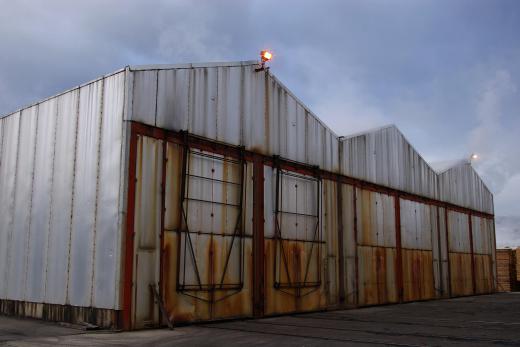A lumber kiln is a type of oven used to dry out green wood for more immediate use. Different types of kilns treat different substances by heating them to specific temperatures. Other popular types of kilns include ovens for firing ceramics, glass, and bricks.
The lumber kiln is one of several types of wood treating kilns. Kiln dried wood is also used for firewood in some kinds of operations. Milled logs and kiln dried lumber are most often shipped to building supply stores.

The most common types of lumber kilns are made so that forklifts or other pallet type machines can easily place loads of lumber into the kiln or oven space. The kiln drying process helps take moisture out of the wooden beams so that they will provide better materials for building projects. The original moisture content of timbered wood can make it difficult to work with.

In common types of lumber kilns, steam is used to heat the wood. Some models have electrical heating or other systems, but steam heating is still among the main technologies used for this type of installation. Venting typically distributes the heat, where a lot of the work that a lumber kiln does is in moving hot air from one point to another. Elements called heat exchangers accomplish this efficiently in many lumber kiln models.
In addition to the above elements, some models use spray or mist water systems to help treat the wood. Others use directional fans to help dry the wood by moving the air more quickly. Some types of lumber kilns even use renewable energies like solar.
Companies that want to treat lumber effectively will look at the ratio between cost and capacity for a lumber kiln installation. The specific ways that a lumber company invests in wood treating technology will directly affect their products. A lumber kiln can be part of a larger treatment system, or contained in its own station.
As governments continue to attempt incentives for ecological business practices, it’s likely that companies will revisit the ways that they treat wood in lumber kilns. New adaptations might decrease the amount of energy needed to dry a certain type of soft or hard wood. Lumber companies that make use of new technologies and methods that can realize savings and become eligible for other incentives as well. In addition, these companies can become models for others that want to innovate their wood treatment processes in order to use less energy.
